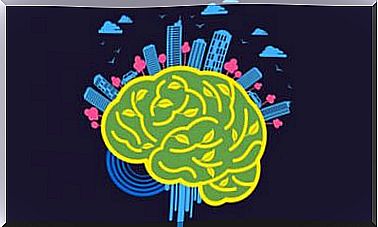Substance Addiction: Tolerance And The Withdrawal Syndrome

We’ve all heard about substance addiction, tolerance, and the withdrawal syndrome. But what exactly do these terms mean?
Generally speaking, it is understood that the substance addiction disorder applies to all those substances that, introduced into the body, affect or alter the mood and behavior. Among them, we can find legal drugs such as alcohol or tobacco, or illegal substances such as marijuana, cocaine, LSD, etc.
Today we have impressive data on the prevalence of psychoactive substance use. Over the age of 15, 91% of the population has used alcohol, and 64% has used tobacco. It is even more worrying if we look at substance use between 14 and 18 years old: 66% used alcohol in the last month, and 37% used tobacco.
Some fundamental aspects to understand why substance addiction occurs are the processes of tolerance and withdrawal. Both are closely linked to each other, as they appear through the body’s compensatory response. But before explaining this, we need to understand what happens in our brain when we take a drug.

Substance use and the reward system
Most psychoactive substances are highly related to the brain’s reward system and dopamine. Dopamine is a neurotransmitter that is released when we perform desirable behaviors, and its function is that these are reinforced to repeat them in the future. Basically, dopamine is the “prize” that the body gives us in the form of pleasure for doing something that looks cool.
Drugs trigger or even simulate the release of dopamine in our reward system. Some, like alcohol, do so through indirect mechanisms, and others, like amphetamines, have a similar chemical composition and act like dopamine.
This false release when taking drugs causes our reward system to activate. A set of mechanisms that allow the association of certain situations with a feeling of pleasure. In this way, our brain thinks that consumption is beneficial to the body, even though it is actually very harmful.
Now, these large “false dopamine” discharges also cause a strong imbalance in the individual’s homeostasis. This leads the body to activate its regulatory mechanisms to resolve this gap. This situation causes tolerance and withdrawal syndrome, processes that we explain below.
Tolerance and substance addiction withdrawal syndrome
Our body’s regulatory mechanisms modulate brain chemistry to prevent an internal imbalance from appearing. Substance use is an example where this happens. Let’s see what it consists of.
Imagine that every Saturday you go out to a party and take a few shots of any alcoholic beverage. Since alcohol is a drug that mimics endorphins, your endogenous opioid system is overactivated, which leads to a release of dopamines and a satisfying feeling. What happens is that if this behavior is repeated, your body learns what will happen and generates a compensatory response.
This is where drug tolerance comes in. The next Saturday that you go out again, your brain, as it already knows that you are going to consume alcohol and this will cause an imbalance, will reduce the basal levels of endorphins. This will cause your endogenous opioid system to depress, but after drinking alcohol, it will return to normal. Your subjective feeling will be that alcohol has no effect on you, and you will have to drink more to make up for the compensatory drop due to tolerance.
Now look, what happens if you suddenly stop drinking alcohol? What happens to this compensatory response? Even though you have reduced or eliminated consumption, the compensatory response continues to appear. If we go back to the previous example, when you go out on a Saturday with no intention of drinking alcohol, the brain will think so, since that’s what it had learned. Therefore, your level of endorphins will drop a lot, and not being compensated for by drinking alcohol, it will cause heightened anxiety. This is what is known as the withdrawal syndrome.

Conclusion
The presence of tolerance and withdrawal syndrome are obvious symptoms of a substance addiction disorder. When tolerance begins to appear, there will also be abstinence when you stop consuming the substance. In addition, the appearance of the withdrawal syndrome usually leads to substance consumption, to reduce the anxiety it causes. We have to take these biological mechanisms into account to understand addiction processes.
Substance addiction disorder is a global health problem. It must be understood that it causes a variety of social, work, personal and health problems. Furthermore, if what we want is to improve people’s quality of life, it is essential to know the mechanisms of action of drugs to make the population aware of the risks behind their consumption.









